In a small quarter-acre plot inside a gated community at Kodikonda in Sri Sathya Sai district of Andhra Pradesh lies a lush green patch. It houses over 163 varieties of trees, ranging from fruit to medicinal trees. The small food forest bears everything that suffices a family of four and sometimes even more.
It would surprise one to know that the place, while currently a lush food forest, was a piece of barren land until a few years ago. But Pushpa and Kishan Kallianpur from Bengaluru bought and revived it into something unique.
A dentist-turned-freelance makeup artist, Pushpa always had a vision of growing her own food and leading a life close to nature. She says that building the food forest named ‘Vrukshavanam’ was in fact a dream-fulfilling experience for her.
“We bought the land almost 2.5 years ago around the time when the pandemic broke out. It was completely barren. It took us around three months and a lot of effort to make the soil potent,” Pushpa tells The Better India.
Today, the patch of land not only houses hundreds of trees, but also different layers of vegetation. It includes several vegetable plants, leafy greens and herbs. The couple designed and grew the entire food forest following the principles of permaculture.
They also built an eco-friendly abode — a mud house — named Shambhala Mane (Tranquil Home) amidst the greenery of Vrukshavanam.
Growing up in different parts of Karnataka, Pushpa recalls that her family always made it a point to nurture a patch of green around the houses they lived. “My dad was in the police, so we moved from one place to another with his job transfers. But wherever we went, we always nurtured a kitchen garden. I used to get excited about getting fresh vegetables from our garden when my mother cooked. In fact, it was the reason I developed an interest in gardening,” she recalls.
Though a trained dentist, Pushpa has been working as a freelance makeup artist for the past 12 years. She says, “I also happened to take a course in integrated nutrition almost six years back and that’s when I studied the aspects of consuming clean food. It changed my perspective and made me more conscious about the importance of growing one’s own food.”
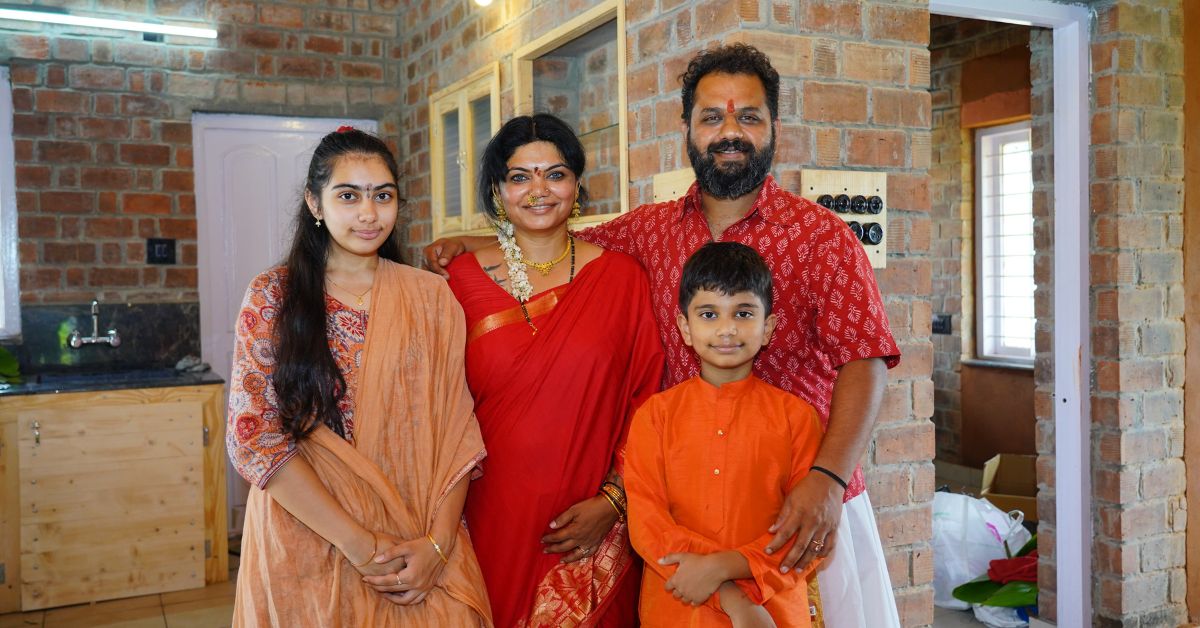
Thus she embarked on her green journey by setting up a terrace garden at her house in Rajajinagar, Bengaluru. “I realised that we couldn’t be sure whether the organic food we source was truly clean. So we started a terrace garden and now we harvest clean vegetables that meet all our food needs,” she says.
She adds, “Though we had been growing everything to sustain our small family on our terrace, it hit us only in the early pandemic period how helpful it is to grow a larger food garden. So, we decided to buy a patch of land and replicate the same, all by ourselves,” she elaborates.
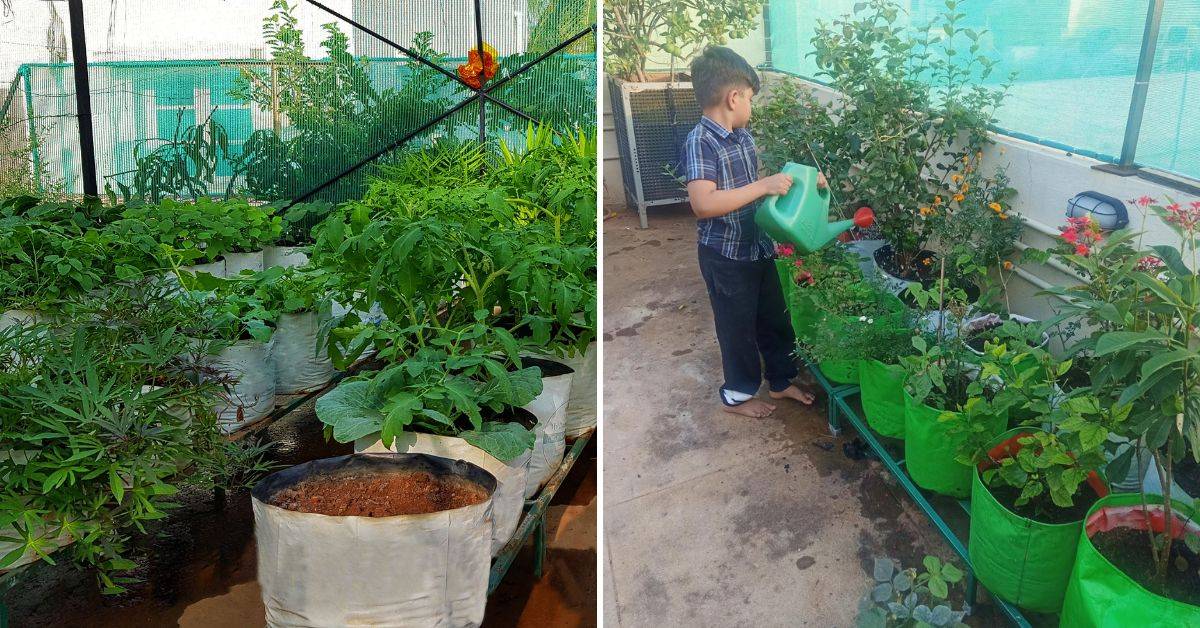
Embracing permaculture
Pushpa’s research on setting up a chemical-free green patch led her to the concept of permaculture. She took a course in permaculture design to understand the concept and implement it better.
Permaculture — permanent and agriculture — is a conscious agricultural design that focuses only on maintaining agricultural ecosystems in a self-sufficient and sustainable way. It was conceived and developed by co-workers Bill Mollison and David Holmgren in Australia in the mid-1970s. Permaculture integrates both landscape and people by providing food, energy, shelter, and other needs in a sustainable way.
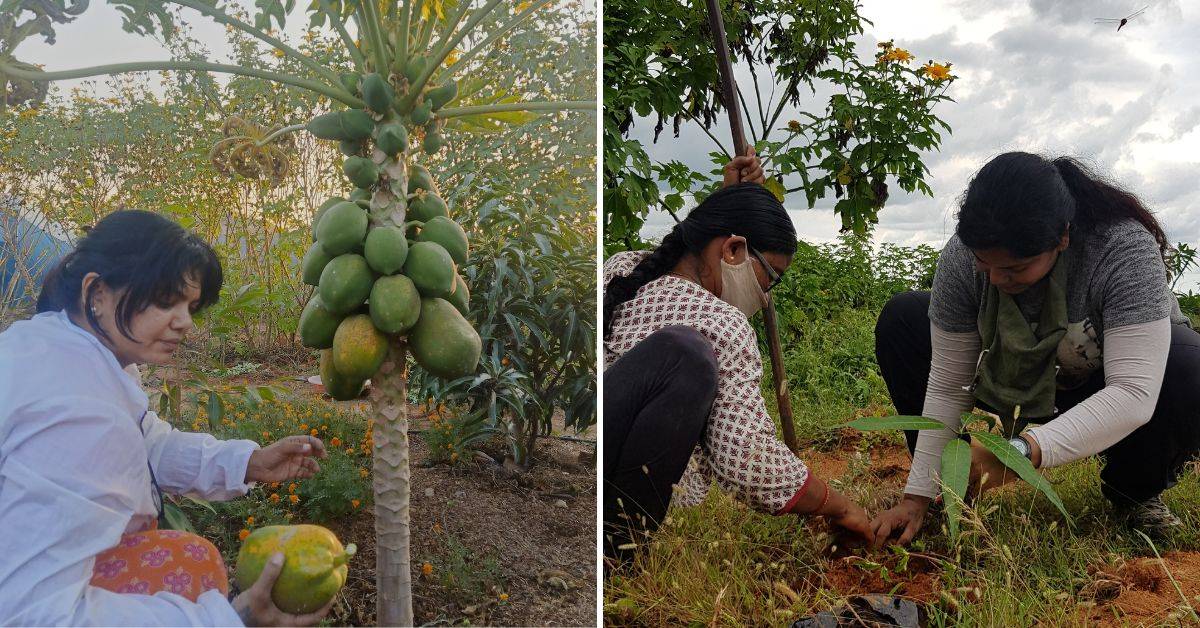
“The concept is to grow everything mimicking the forest. We design the land first and enrich the soil. Then we maintain the land by growing a diverse range of trees and vegetation in different layers for a few years. There comes a point where it becomes self-sustaining, self-renewing and stable, like a forest,” Pushpa says.
After buying the piece of barren land, it took Pushpa and Kishan around three months to turn it into fertile land. “It was a grassland that wasn’t used extensively for agriculture, so it didn’t take much time to prepare it. We planted nitrogen-fixing plants and added several organic inputs like compost and manures. Within three months, the soil became alive with microbes and was ready,” she says.
Once the land was ready, the couple planted different types of trees across the plot following the permaculture guidelines.
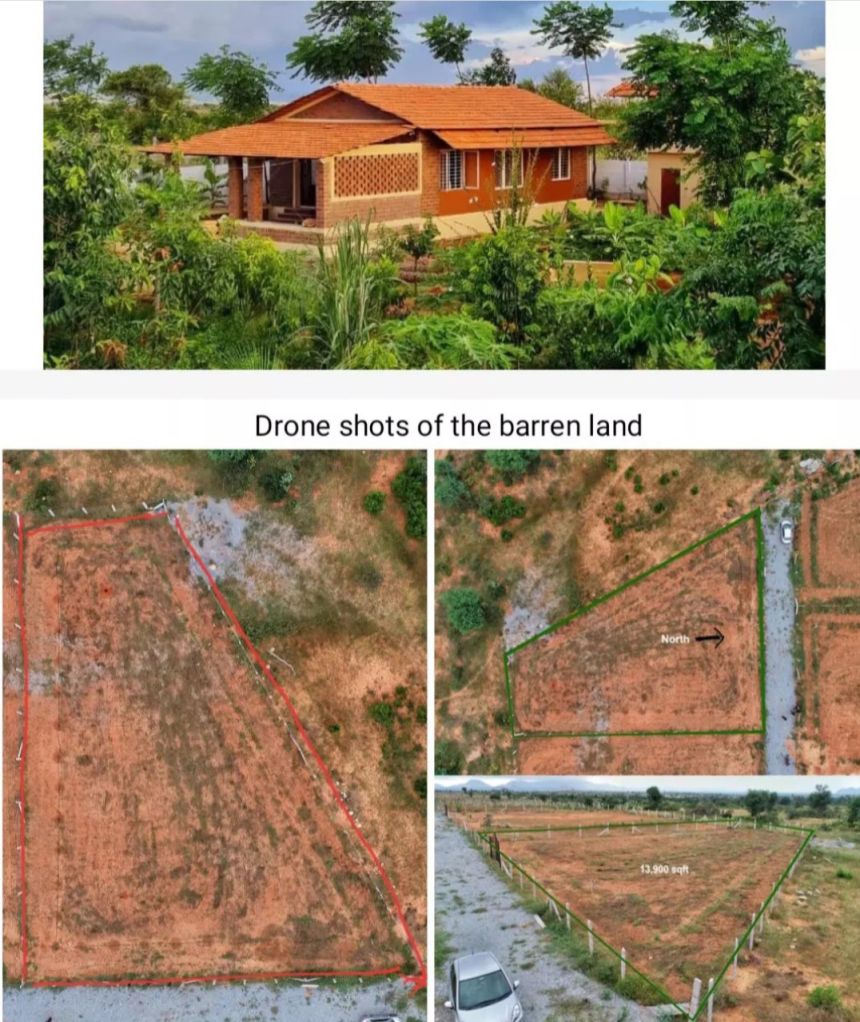
“In permaculture, there are different zones. There is a zone for setting up a kitchen garden which will be closer to the living. Then there’s a zone for the fruit forest. And a wild zone dedicated to wildlife and birds without much human intervention. Even though our plot is small, we have tried to implement this,” explains Pushpa.
Jackfruit, mango, sapota, jamun (Java plum), avocado, starfruit, pomegranate, guava, figs, passionfruit, banana, papaya, and lemon are some of the fruits trees growing in Vruskshavanam. It also houses a few medicinal trees like simaruba, soursop, amla, neem, and agase (vegetable hummingbird). There are several flowering plants like hibiscus, rose, jasmine, marigold, and butterfly pea flower.
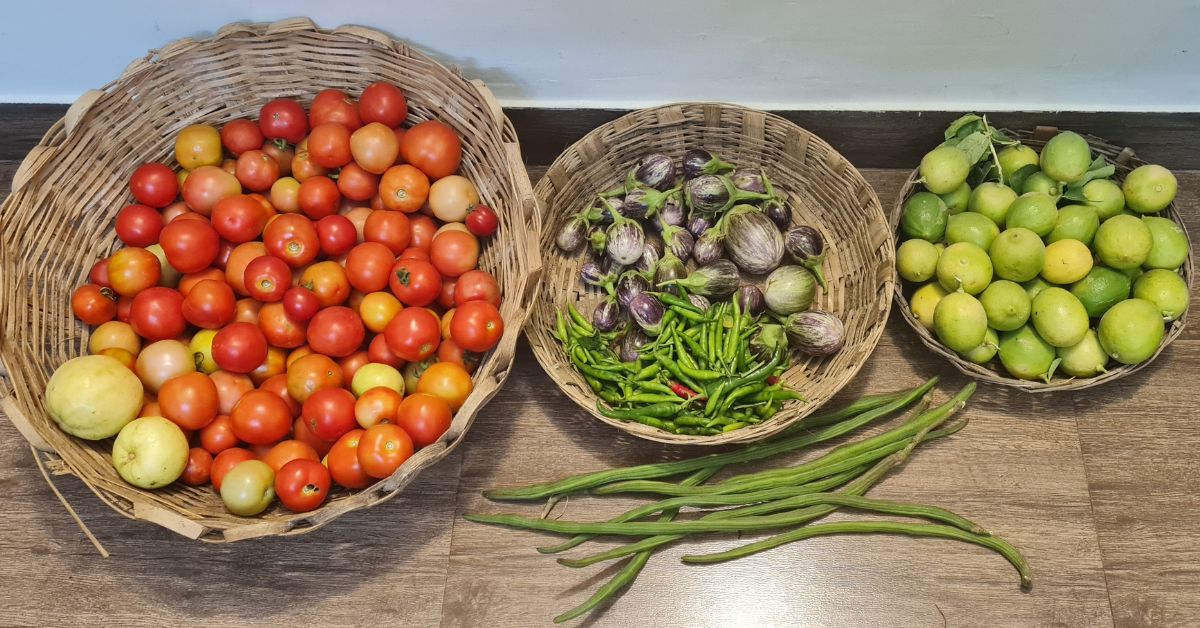
“Though we give importance to trees at Vrukshavanam, we also grow all the basic vegetables like tomatoes, curry leaves, brinjal, cauliflower, cabbage, etc according to the season. We also have a small patch of herbal garden where we grow lemongrass, vetiver, mint, citronella, rosemary, basil, etc,” she says.
“We make sure to only grow what we eat and in the right quantity. We never let anything go to waste. Anything in excess is used to make products like juices or sauces. Or they are dried and powdered for future use,” Pushpa adds.
Sustainable and eco-friendly mud home
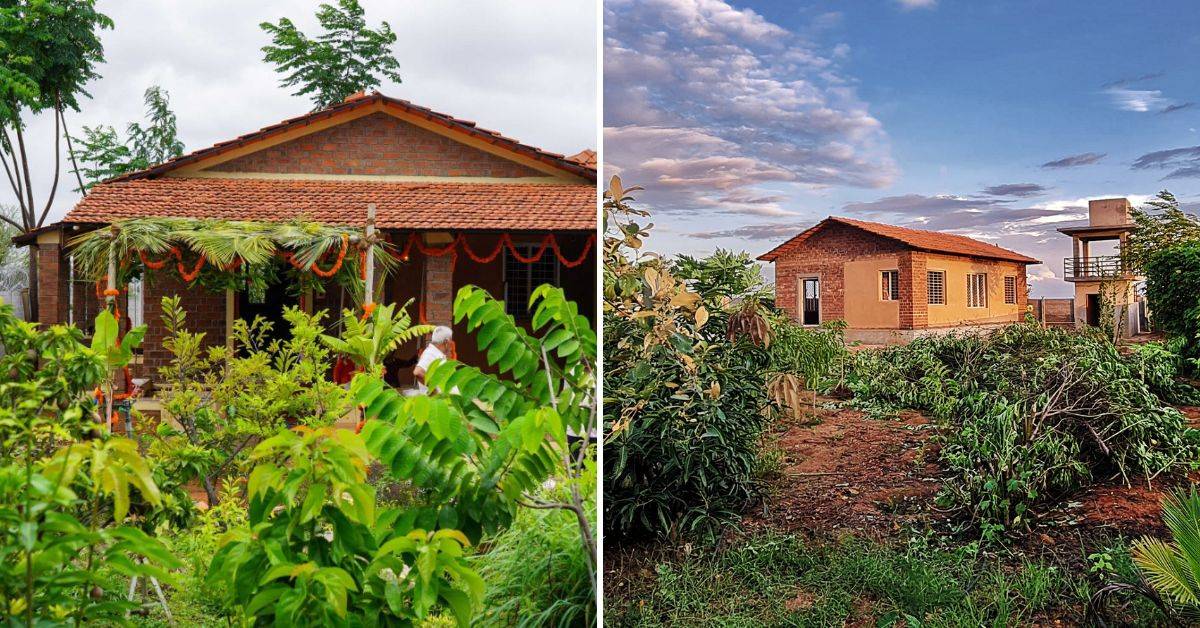
“It has always been my vision to have a space where we grow our own food and live in a natural building like a mud house. We finally made it a reality this year,” she says.
Though they had a proper plan in mind, Pushpa says that it was challenging to find the right people to build the mud house. “We couldn’t find the right workforce who were ready to come and work there. So we had to change several architects and people. Eventually, we decided to learn the technique of building a natural house from Thannal Natural Homes.”
“After attending a workshop, Kishan, our kids, and I camped at the site for days and built the wall all by ourselves. It took us more than a year to complete the whole construction,” she adds.
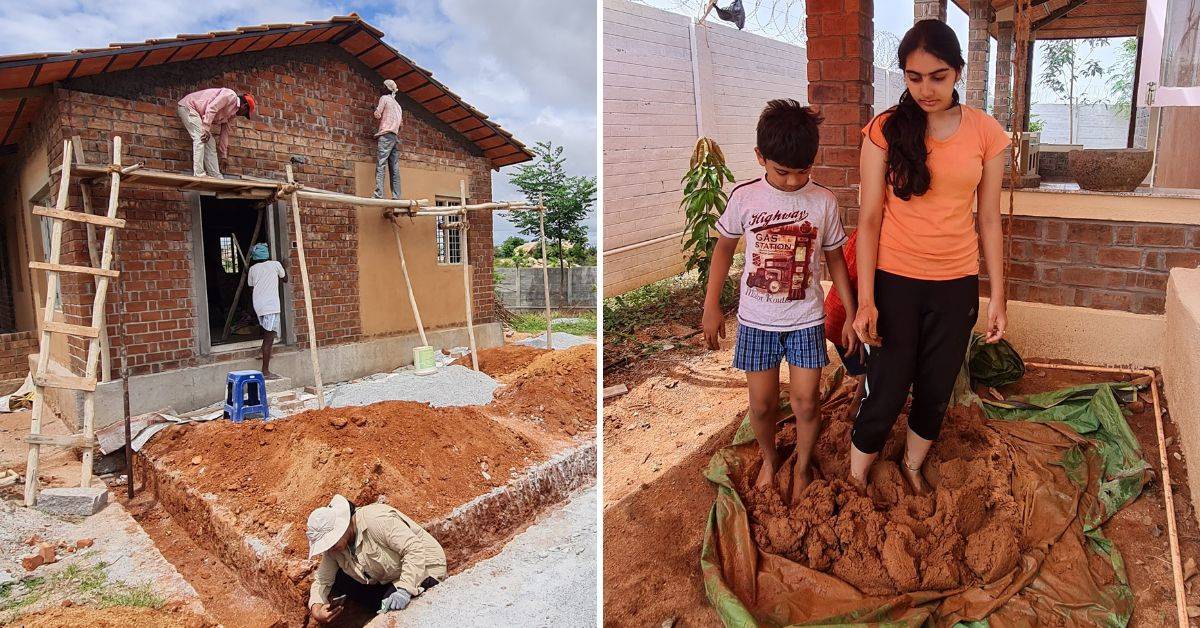
The sustainable and eco-friendly house of 600 sqft — Shambhala Mane — is built using mud bricks and has breathable walls. All the wood used in the house is either reused or reclaimed wood. The two-bedroom mud house has a huge verandah and a traditionally built kitchen on the outside.
The family now visits their food forest once every week. “The forest is now in a self-sustaining mode and very less maintenance is required. The rains are enough for the trees but we have set up a drip irrigation system for the rest of the plants, which require scheduled watering,” she says.
Pushpa says that they received a lot of negative criticism when they embarked on their green journey. But it seemed to have changed with time. She says, “We proved that it is possible to grow anything and everything even in a small patch of land, in the most sustainable and organic way.
Edited by Pranita Bhat
No comments:
Post a Comment